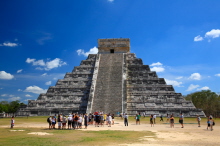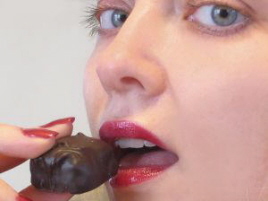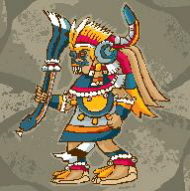|
Delicious Chocolate - Why do we love it so much?
This goes as far back in history when Aztec royalties indulged themselves with chocolate which they called "xocoatl". 
Because of its popularity and importance, the cocoa beans even became a form of currency among Mayans and Aztecs. spicy. Deciding that cultivating the cocoa tree could be a great business; he established multiple plantations thereby making money for his home country Spain. The bittersweet taste of the cocoa inspired very little support from its drinkers until it was adjusted to Spanish tastes by adding Cinnamon, Nutmeg and Sugar. The concoction was so revered in the high courts that the drink was reserved only for the nobility and the Spanish refused to share this delicacy with any other nation. In the 17th century, the Dutch broke Spain's monopoly of cocoa when they captured Curacao. They brought cocoa beans from America to Holland, where cocoa was greatly acclaimed and recommended by doctors as a cure for almost every ailment, and also enabled the cocoa trade to spread.
In 1492, Columbus presented King Ferdinand and his Queen with cocoas upon his return but very little attention was given to them and even on his journey in search for spices in India, Columbus didn't realize the great potential of the cocoa. Otherwise he could have been the one who discovered and announced the immense potential of cocoa.
Sweet Love Story in Paris Chocolate was introduced to France when Spanish Princess Maria Theresa married Louis XIV of France. As an engagement gift, she gave her fiancé chocolate in a ornately decorated Chest which took the French by the heart. Their marriage must have been made in heaven because it was said that King Louis made love twice a day with his wife. The aphrodisiac qualities were further recognized by the French nobilities; even their art reflected the dark, tempestuous allure of the confection.
In 1828, it was found that including a little bit of the cocoa butter actually made the drink a lot smoother. Between 1830's to the late 1840's the makers developed the drink into the solid form and later a fondant was introduced. And so in 1849, the Cadbury Brothers exhibited their decadent creations in Bingley Hall Birmingham, England. The Swiss Take the Lead After many years of dedicated study on how to process the cocoa, the Swiss discovered a way to cook the chocolate by means of refining it called 'conching'. It took about 72 hours of continuous rolling and refining, thus the known texture today. It was a Swiss too that discovered a means to add flavour by filling it. Whatever kind of this delicious confection you enjoy today is a result of many years of devotion to xocoatl. Go to - The Seven Heavens of Chocolate
|





 A Brief History of Chocolate
A Brief History of Chocolate







